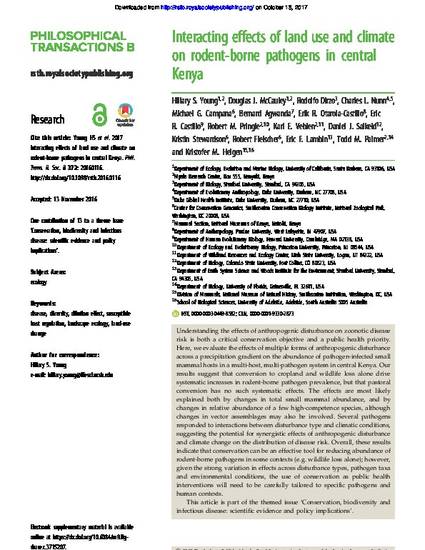
Article
Interacting effects of land use and climate on rodent-borne pathogens in central Kenya
Philosophical Transactions of the Royal Society B
(2017)
Abstract
Understanding the effects of anthropogenic disturbance on zoonotic disease risk is both a critical conservation objective and a public health priority. Here, we evaluate the effects of multiple forms of anthropogenic disturbance across a precipitation gradient on the abundance of pathogen-infected small mammal hosts in a multi-host, multi-pathogen system in central Kenya. Our results suggest that conversion to cropland and wildlife loss alone drive systematic increases in rodent-borne pathogen prevalence, but that pastoral conversion has no such systematic effects. The effects are most likely explained both by changes in total small mammal abundance, and by changes in relative abundance of a few high-competence species, although changes in vector assemblages may also be involved. Several pathogens responded to interactions between disturbance type and climatic conditions, suggesting the potential for synergistic effects of anthropogenic disturbance and climate change on the distribution of disease risk.
Disciplines
Publication Date
2017
DOI
https://doi.org/10.1098/rstb.2016.0116
Citation Information
Kari E. Veblen. "Interacting effects of land use and climate on rodent-borne pathogens in central Kenya" Philosophical Transactions of the Royal Society B Vol. 372 Iss. 1722 (2017) Available at: http://works.bepress.com/kari_veblen/49/
